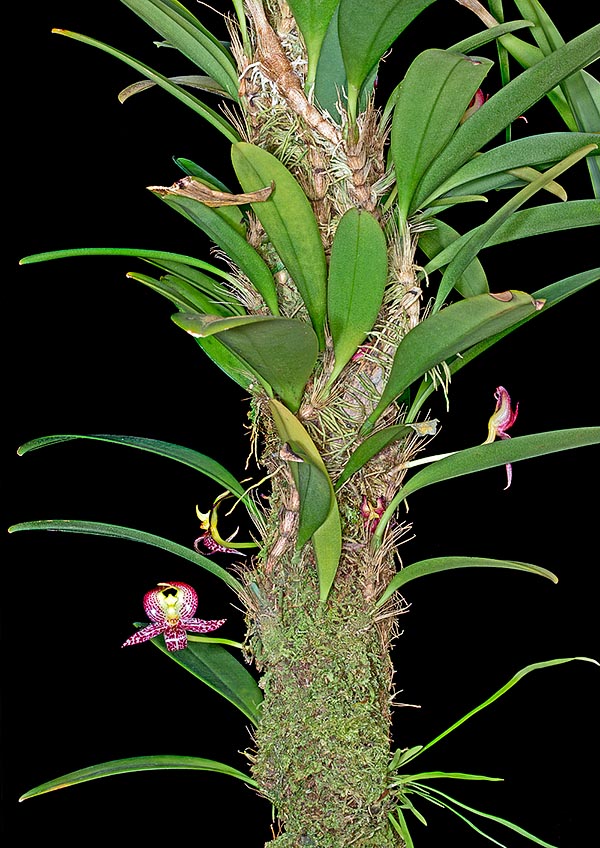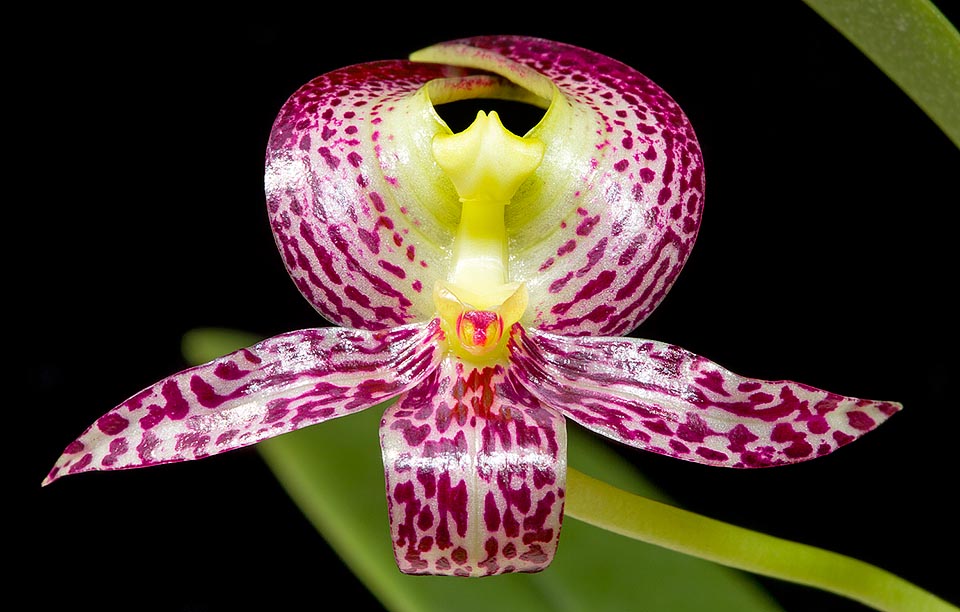Family : Orchidaceae

Text © Pietro Puccio

English translation by Mario Beltramini

Vigorous species with relatively large and attractive flowers that emit a slight pleasant scent, the New Guinea Bulbophyllum grandifolium would derve a better horticultural spread © Giuseppe Mazza
The name of the genus is the combination of the Greek substantives “βολβός” (bolbos) = bulb and “φύλλον” (phyllon) = leaf, with reference to the leaves growing at the apex of the pseudobulbs; the name of the species is the combination of the Latin adjective “grandis, e” = large and of the substantive “folium, ii” = leaf, with obvious reference.
Common names: large leafed bulbophyllum (English).
The Bulbophyllum grandifolium Schltr. (1913) is an epiphytic species with ovoidal pseudobulbs, 2-4 cm long and of 0,7-2 cm of diameter, provided of only one leaf at the apex and spaced 7-16 cm on a creeping rhizome, of 0,5-0,8 cm of diameter, rooting at the nodes. Leaves, on an about 3 cm long petiole, elliptical-obovate with obtuse apex, 16-28 cm long and 4-8 cm broad, of intense green colour, coriaceous.
Basal inflorescence, on a 1,5 cm long peduncle, bearing only one flower, of 6-7 cm of diameter, not resupinate (with the labellum on top over the column), with sepals and petals of white to greenish white colour with dense longitudinal spottings of purple red colour and pale yellowish green labellum; about 6 cm long pedicel and ovary.
Ovate dorsal sepal with retroflexed acuminate apex, 2,5-3,5 cm long and 0,8-1,2 cm broad, with ovate-triangular lateral sepals with acuminate apex, 2-3 cm long and 0,8-1,2 cm broad, converging towards the apex to touch or overlap, lateral petals usually well stretched, ovate-elliptical with acuminate apex, 2-3 cm long and 0,5-0,8 cm broad, labellum curved in the central part, linguiform in the terminal part, 0,8-1 cm long and about 0,5 cm broad, and about 0,5 cm long column.
It reproduces by seed, in vitro, and by division, with each section provided of at least 3-4 pseudobulbs.
Vigourous species with relatively large and particularly attractive flowers, that emit a light pleasant scent, that would deserve a better diffusion with the orchidophilous passionates. It requires a partial shade and medium-high temperatures, 22-34 °C, with lowest winter night ones over the 16 °C, high and constant humidity, 75-85%, and air in continuous light movement.

The stained purple flowers grow isolated at the base of the pseudobulbs and may reach the 6-7 cm of diameter © Giuseppe Mazza
The species is reported in the appendix II of the CITES (species whose trade is internationally ruled).
→ For general notions about ORCHIDACEAE please click here.
